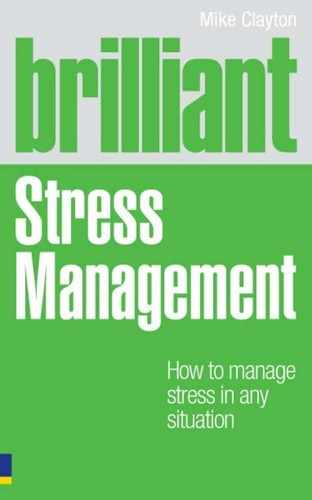84 brilliant stress management
guidance and leaving me anxious and exposed, with a risk to me,
to the organisation, and to you, if I get something wrong.
Commitment
Check that I understand what you want, am able to do it, and
am committed to taking it on. In return, give me your commit-
ment to provide me with the support I need, to do the job well,
to do it safely, and to learn from my experience.
Monitoring
The task started off as yours, so the ultimate responsibility for it –
and now for me – lies with you. So, periodically, check in with me
to nd out how I am doing and give me the support I need. Set the
frequency and style of your monitoring to match the level of risk,
the importance of the task and my needs for support and guidance.
Feedback
When I am nished, review my performance. Give me good
feedback on what I have done, that will help me learn and build
my condence. Thank me for my work and give me praise for
what I have done well.
Dealing with overwhelm
Sometimes there is just too much to do and you are frozen by a
feeling of being overwhelmed by it all. You need to grasp control
and here is a simple ve-point plan to do just that.
1 Make a list of all the things that are overwhelming you
This will look like a To Do list, and it is important to get every-
thing down so that you can manage the problem.
2 Apply the Urgent and Important categories
For each task, assess whether it is urgent or not and whether it
is important or not. Now be bold: delete every task that is not
Control your time 85
important. If this feels just a little too scary, before you delete
them, place them on to a new list: a To Don’t list. You can then
le this away so that you won’t lose sight of those tasks, but,
equally, they won’t distract you from the important ones.
3 Divide the remainder into three lists
A Urgent and Important and quick (Type A)
These are the things you can do in a few minutes.
B Urgent and Important and substantial (Type B)
These are the things that will need some focused effort.
C Important but Not Urgent
These are the things to save until you no longer feel
overwhelmed.
4 Clear the Urgent and Important things first
Use the ‘Boxed Burst and Break’ (BB1B) method:
1 Frenzy
Allow exactly 15 minutes to clear all the quick things (Type
A) you can.
2 Burst of work
Now do 40 minutes of intense work on one of the more
substantial things (Type B). Aim to make some real
progress in a strict 40-minute slot.
3 Now take a break for ve minutes
This must include one glass of water and some time outside
in the fresh air.
5 Repeat step 4
Continue the BB+B method until you feel in control of your task
lists and you are no longer overwhelmed. Take a more substan-
tial break after three or four cycles. You will probably nd that
..................Content has been hidden....................
You can't read the all page of ebook, please click here login for view all page.
